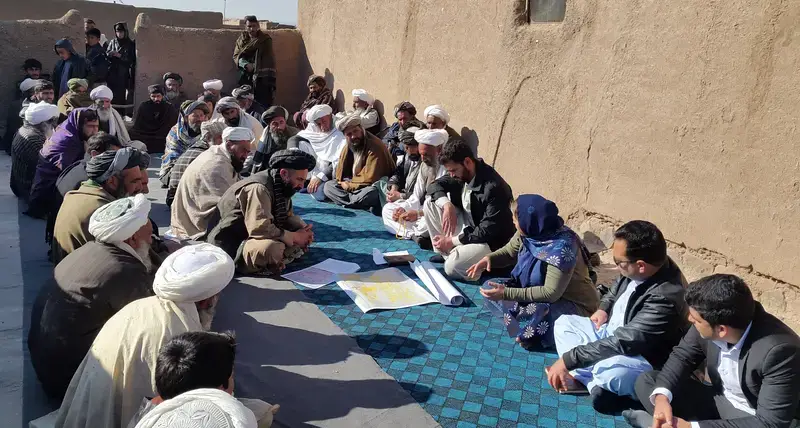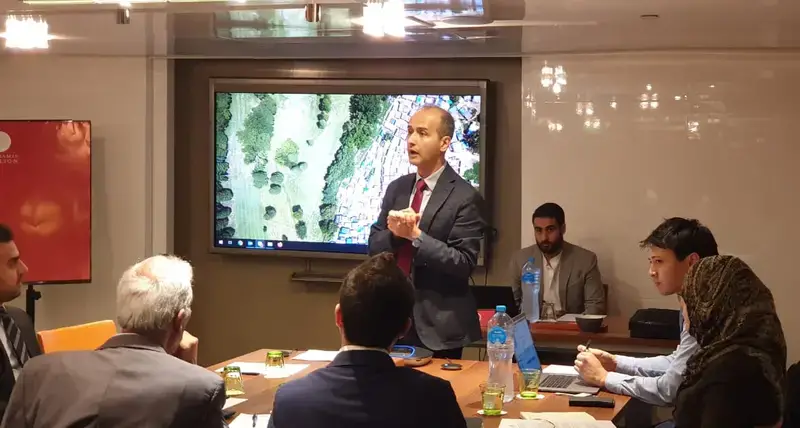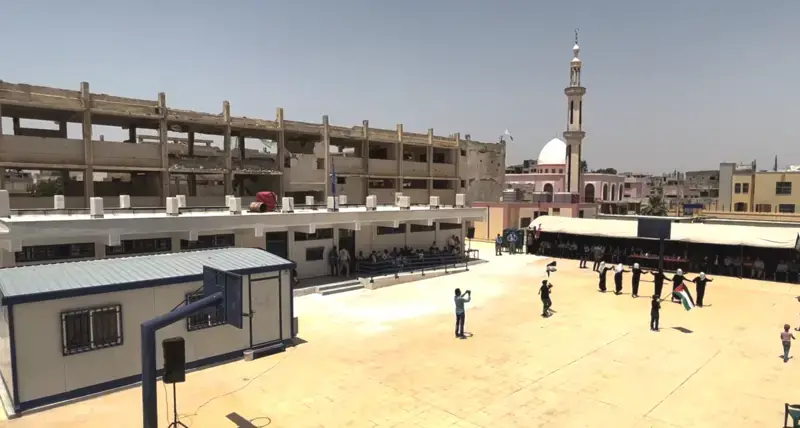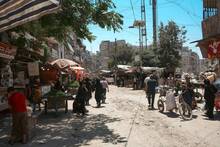UN-Habitat Syria, established in 2014, supported urban recovery planning facilitating voluntary, safe and dignified returns of populations, and assisting Syrians in the complex task of rebuilding their lives and communities. Since the collapse of the former regime in December 2024, UN-Habitat has focused its efforts on creating an enabling environment for returns of displaced populations, recovery of urban functionality and recovery of housing.
Country: Overview
Country: Overview
Country: Overview
Impact
Country: Impact and Urban Numbers
92 City Profiles and Recovery Plans produced (including 17 comprehensive city profiles)
120 Neighborhood Recovery Plans produced
+50 area-based recovery projects (infrastructure rehabilitation, public spaces restoration, etc.)
+125 HLP-related laws translated (into UN-Habitat’s UrbanLex legal database)
+30 knowledge products and policy papers developed
Urban numbers
Country: Impact and Urban Numbers
16.5 Million People in Need
7 Million in need of shelter support
1 Million damaged housing units, due to conflict and earthquakes
+7 Million people remain refugees outside Syria, with a similar number displaced internally
Challenges
Syria has suffered from a protracted conflict since 2011, leading to massive destruction of housing and infrastructure in urban areas, as well as large scale displacement and population movements, from rural areas into cities, between cities, and within cities. This crisis has been further compounded by an economic crisis, crippling sanctions and the February 2023 earthquakes which further shook the nation. Since the collapse of the former regime in December 2024, there is renewed hope for a lasting solution to the conflict. However, complex housing, land, and property issues, in addition to the breakdown of social, economic, and basic services networks, continue to limit and restrict economic activities, returns, and recovery. UN-Habitat plays a key role in supporting recovery planning in urban areas, facilitating voluntary, safe and dignified returns of populations, and assisting Syrians in the complex task of rebuilding their lives and communities.
Our urban development projects
Country Beneficiaries
''Being part of the working session has allowed me to work with other students as well as teachers and people from my area (Al-Sbenah in Rural Damascus), we discussed enhancing access to school for all students, especially students with disabilities (for example in wheelchairs) and we agreed that they will start using the classrooms on lower floors to help them arrive easily. We also discussed the need to remove debris and explosive remnants from roads to school and raising awareness through school broadcast on explosive remnant and how to best avoid them and reduce injuries that could be caused by them. This was the first time for me to participate in such session and I hope I will be part of upcoming ones to help my friends be safe in a way''
Abd Al-Hakim, Community working session participant
Donors and partners
In Syria, the recovery of urban areas is dependent on building successful partnerships with local authorities, civil society, UN partners, and with our key donors. Urban recovery relies on enabling policies, strong donor partnerships, and coordinated urban area based responses that directly respond to locally identified priorities. Therefore, UN-Habitat Syria in an urban advisory role has heavily invested in Joint Programming to ensure coordination amongst donors and our UN partners - and in strengthening the capacity of municipalities to develop and coordinate evidence-based response plans that have been locally consulted with all stakeholders.
Donors
Donors
Contact
Legacy content
As the Syria conflict enters its fifth year, the “What does it take to end the crisis?” campaign is gaining momentum. The hashtag #WhatDoesItTake has already been tweeted 26,000 times and the campaign has the potential to reach 60 million people. The campaign, however, is born out of frustration with the human cost of the Syrian conflict. Frustration with the fact that humanitarian assistance was never meant to be a solution. Everyone agrees, the solution to the Syria crisis is political. As such, the current stalemate can continue for many years. Or, the situation can change overnight. The question is, if the Syria crisis ends tomorrow, is the international community ready to support peace in Syria? If it comes, peace in Syria will be a “patchwork peace”. In some areas, the fighting will continue. In others, people will start returning, rebuilding their homes, looking for jobs, wanting to send their children to school. Many people will return to cities, believing that security will be better and that health care, schools and job opportunities will be more accessible. Do we know which cities and which neighbourhoods are more likely to support returns? How will we address the complicated issue of land and property rights? In addition to physical reconstruction, what will we do to help rebuild divided societies? If it comes, peace in Syria will bring a surge of private investment, again much of it in cities. Are we engaging with business leaders to understand the opportunities and challenges from their perspective? Do we have a prioritized plan for the critical infrastructure investments necessary to support economic recovery? How will we create the kinds of jobs that can convince youth to stop fighting and begin rebuilding their lives and communities? In fact, we do not need to wait for peace in Syria. We can start now to promote stabilization and recovery. The reality is that Syria today is a patchwork. True, some areas are devastated and will require massive investment to re-build. But there are many others where small investments can make a huge difference. Many cities and neighbourhoods have been free from conflict for more than a year. These areas require a different approach – one with a stabilization, recovery and even peace-building agenda. For the past 18 months, UN-Habitat has been experimenting with just this kind of approach, through pilot projects in Aleppo, Homs and Rural Damascus. The results have been encouraging. Syrians are eager to be consulted on their priorities. They contribute their own time and money to initiatives that support their coping strategies. And they protect the investments that have been made. The message is clear: after four years of conflict, we need a new approach to peace in Syria, one that begins with Syrians themselves. While local initiatives will not bring peace in Syria, they can help create practical local alternatives to continued conflict.




